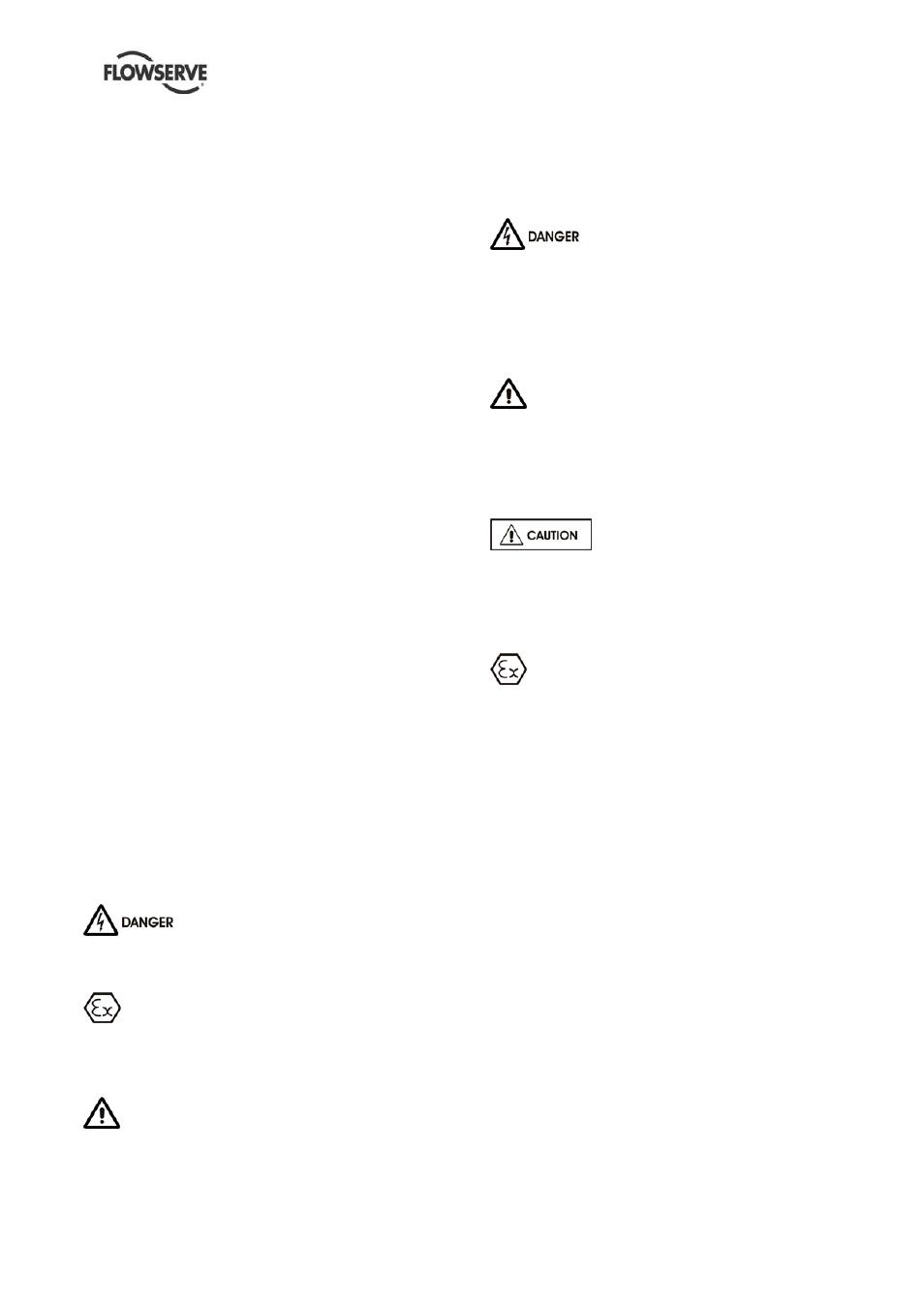Flowserve LPNV Worthington User Manual
Page 22

LPNV USER INSTRUCTIONS ENGLISH 87900031 – 06/14
Page 22 of 48
4.4.5.2 Pumps fitted with mechanical seals
Single seals requiring re-circulation will normally
be provided with auxiliary piping from pump casing
already fitted. Symbols which FLOWSERVE work
on seal connections are as follows:
Q - quench
F - flush
D - drain
outlet
BI
-
barrier fluid in
BO
-
barrier fluid out
Single seals which require external flushing or
auxiliary quench must be connected to a specific
supply.
Double seals require a barrier liquid compatible
with the pumped liquid.
With back-to-back double seals, the barrier liquid
should be at a minimum pressure of 2 bar above
the maximum pressure on the pump side of the
inner seal. The barrier liquid pressure must not
exceed limitations of the seal on the atmospheric
side. For toxic service the barrier liquid supply and
discharge must be in a safe area.
For specific information refer to the mechanical
seals manufacturer’s instructions.
4.4.6 Final checks
Check the tightness of all bolts in the suction and
discharge pipework. Check also the tightness of
all foundation bolts and auxiliary lines.
4.5 Final shaft alignment check
After connecting piping to the pump, rotate the
shaft several times by hand to ensure there is no
binding and all parts are free.
Recheck the coupling alignment, as previously
described, to ensure no strain on coupling is due
to pipe. If pipe strain exists, correct piping.
4.6 Electrical connections
Electrical connections must be made
by a qualified Electrician in accordance with
relevant local national and international
regulations.
It is important to be aware of the
EUROPEAN DIRECTIVE on potentially explosive
areas where compliance with IEC60079-14 is an
additional requirement for making electrical
connections.
It is important to be aware of the
EUROPEAN DIRECTIVE on electromagnetic
compatibility when wiring up and installing
equipment on site. Attention must be paid to
ensure that the techniques used during
wiring/installation do not increase electromagnetic
emissions or decrease the electromagnetic
immunity of the equipment, wiring or any
connected devices. If in any doubt contact
Flowserve for advice.
The motor must be wired up in
accordance with the motor manufacturer's
instructions (normally supplied within the terminal
box) including any temperature, earth leakage,
current and other protective devices as
appropriate. The identification nameplate should
be checked to ensure the power supply is
appropriate.
A device to provide emergency stopping
must be fitted.
If not supplied pre-wired to the pump unit, the
controller/starter electrical details will also be
supplied within the controller/starter.
For electrical details on pump sets with controllers
see the separate wiring diagram.
See section 5.3, Direction of
rotation before connecting the motor to the
electrical supply
4.7 Protection systems
The following protection systems are
recommended particularly if the pump is installed
in a potentially explosive area or is handling a
hazardous liquid. If in doubt consult Flowserve.
If there is any possibility of the system allowing the
pump to run against a closed valve or below
minimum continuous safe flow a protection device
should be installed to ensure the temperature of
the liquid does not rise to an unsafe level.
If there are any circumstances in which the system
can allow the pump to run dry, or start up empty, a
power monitor should be fitted to stop the pump or
prevent it from being started. This is particularly
relevant if the pump is handling a flammable liquid.
If leakage of product from the pump or its
associated sealing system can cause a hazard it is
recommended that an appropriate leakage
detection system is installed.
To prevent excessive surface temperatures at
bearings it is recommended that temperature or
vibration monitoring are carried out. See sections
5.7.4 and 5.7.5.
